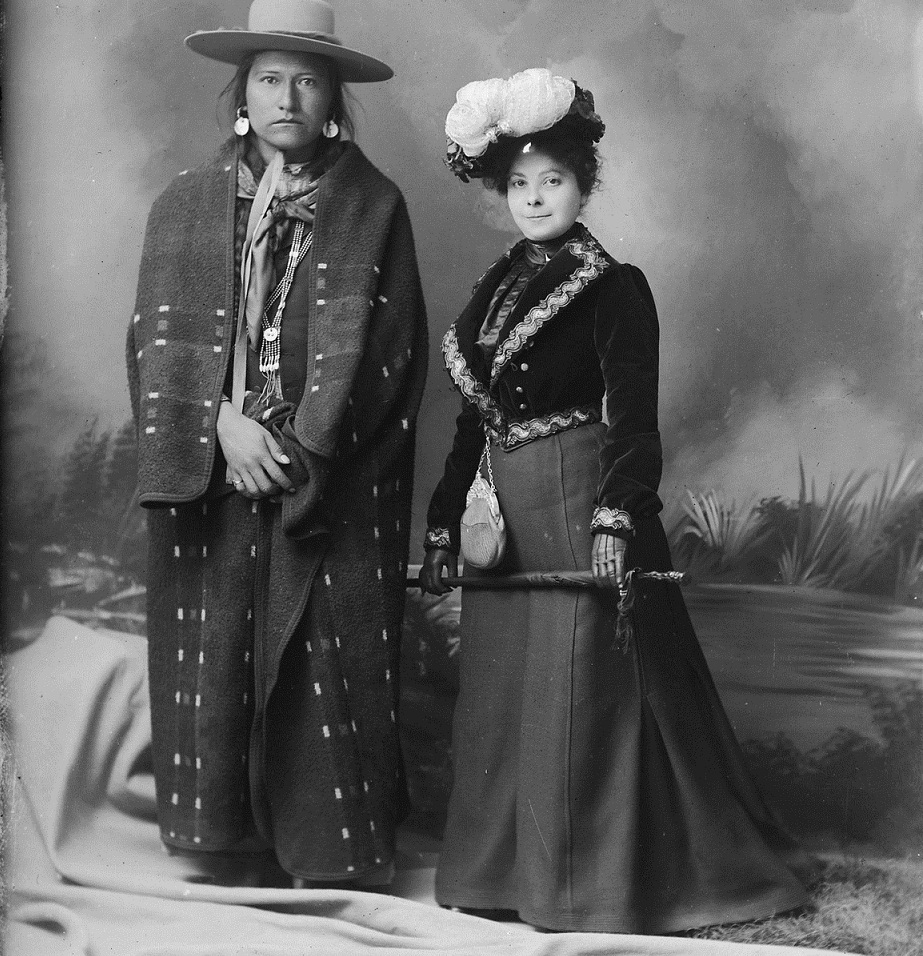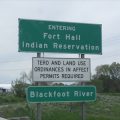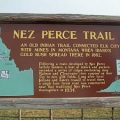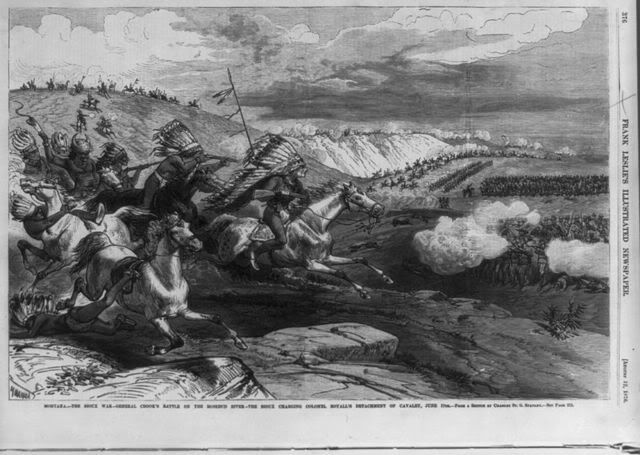
In Idaho, an 1867 editorial in a Boise, Idaho newspaper stated:
“This would be our plan of establishing friendship on an eternal basis with our Indians: Let all the hostile bands of Idaho Territory be called in (they will not be caught in any other manner) to attend a grand treaty; plenty of blankets and nice little trinkets distributed among them; plenty of grub on hand; have a jolly time with them; then just before the big feast put strychnine in their meat and poison to death the last mother’s son of them.”
At this time, the Weiser Shoshone, a group of Sheepeater Northern Shoshone, were declared hostile by the Americans because of reports of alleged depredations. The Weiser Shoshone lived in an area about 100 miles north of Boise, near the present-day town of McCall. The army received order to-
“proceed to the Weiser river and destroy the band of hostile Indians now marauding on said river and in its vicinity.”
The army, however, found that the alleged depredations had not been committed by the Weiser Shoshone, but by other Indian groups who had crossed into the area to hunt.
The army discovered a camp which the Weiser Shoshone under the leadership of Eagle Eye had recently abandoned. They determined that it had been occupied by 75-80 people. In the camp, the army found footprints that measured` 17.5 inches long and this begins a “Bigfoot” legend. According to oral tradition, the Weiser Shoshone had created this legend by using huge stuffed moccasins to make the menacing footprints. We don’t know exactly why they made the footprints: it may have been that they wanted to terrorize the local non-Indians and troops by perpetuating evidence of huge Indians; or it may have been simply a joke; or there may have been some other reason. Whatever their reason, however, the story of a giant Shoshone warrior soon spread throughout the region.
In 1868, the American army captured 41 Weiser Shoshone, including Chief Eagle Eye. While the band had been accused of raiding American settlers, the army found no evidence of plunder among their belongings. They did, however, find a pair of moccasins which were over 16 inches long and which were stuffed with rags and fur.
Eagle Eye was interrogated by the military and the territorial governor about his people’s attitude toward the Americans. The band was then released and they returned to the mountains. Those who talked with Eagle Eye were convinced that his intentions toward the Americans were friendly and that he did not want conflict.
In 1869, a group of Americans visited the Weiser Shoshone camp of Chief Eagle Eye. For over two hours the visitors sat and smoked a peace pipe with the Shoshone. There was no conversation and when the visitors reached the point when they could no longer stand the silence-Indians are more comfortable with silence than are non-Indians-they opened a dialogue. Eagle Eye told the Americans that his people were friendly and that they had no objection to having Americans live in their valley as long as they did not interfere with the Shoshone fishing rights. Eagle Eye also made it clear that they had no intention of being relocated to the Fort Hall Reservation. When the Americans returned to Boise, they reported that the Weiser Shoshone numbered about 70 and that they were well supplied with guns and horses.
For the next five years, the Weiser Shoshone lived in peace in their homeland. However, in 1874 the American government ordered the Weiser Shoshone under the leadership of Chief Eagle Eye to report to the Fort Hall Reservation. Eagle Eye refused this demand and ignored the order.
Two years later, the Commissioner of Indian Affairs was urged by powerful non-Indians in Idaho to have the Weiser Shoshone removed to the Fort Hall Reservation. They urged that troops be dispatched to force the peaceful Shoshone to relocate. The following year, Eagle Eye’s band of Shoshone were removed from their homelands in Idaho and forced to relocate to the Malheur Reservation in Oregon.
The Weiser Shoshone did not like their new life and in 1878 they left the Malheur Reservation in Oregon and returned to their home in Idaho. They found, however, that American settlers had already taken over their old meeting grounds in the Council Valley and that there was no longer a place for them in their old homeland.
At this time, the United States was involved with a war against the Bannock and many people had assumed that Eagle Eye and his people had joined with the Bannock. The Boise newspapers reported that Eagle Eye, the chief of the Weiser Shoshone, was surely killed at Birch Creek in the battle with the Umatilla. In fact, Eagle Eye was still very much alive and had not been involved in the fight with the Umatilla. Eagle Eye and his extended family were in the mountains where they spent much of the winter.
For nearly two decades Eagle Eye and his people continued to live quietly out of the way of the non-Indian invaders, hunting, fishing, and gathering in the old way and working occasionally for wages. For the most part, non-Indians believed that Eagle Eye was dead and thus felt that the Weiser Shoshone no longer existed.
In 1896, Eagle Eye, the leader of the Weiser Shoshone, died. His people gathered together and carried the body of the old chief to the top of Timber Butte. They laid him to rest overlooking the valleys and mountains of the homelands of the Weiser Shoshone. His people continued to live deep in the mountains, out of sight of the non-Indians, until well into the twentieth century. Some eventually moved to the Lemhi Reservation and then to the Fort Hall Reservation.




Leave a Reply